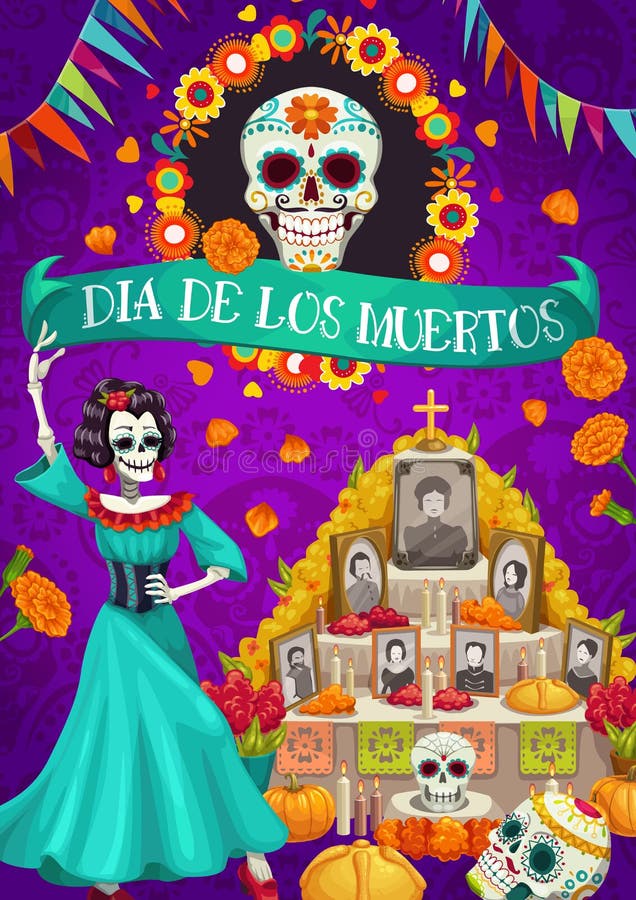

Purple represents mourning and cleanses the place of bad spirits.įigure of Dog Xoloitzcuintle : Allows the Spirits of Children to feel content as they arrive at the banquet Orange petals of marigolds, cempasúchil, form the path that guides the Souls Water: Water of Life is offered to Souls of the Dead to alleviate their thirst Ĭandles: Candles and votive lights guide Souls to their old homes and illuminate their return to their ultimate abode Ĭut Paper: Represents the Wind and Festive Joy Principal elements used in altars and their meanings: Level 7: A Cross fashioned of Seeds, Fruit, Ash or Lime serves so Deceased may expiate his or her sins. Level 6: Photo of the Deceased to whom the altar is dedicated Level 5: Food and Fruit preferred by the Deceased Level 4: Pan de muerto, Bread of the Dead, is offered as nourishment for the Souls Level 3: Salt is placed to purify the Spirit of the Children from Purgatory and so the body is not corrupted on the journey

Level 2: Intended for the Souls in Purgatory and that the Deceased might have permission to leave that place Level 1: Image of Saint to whom the deceased is devoted Here's how they appear on the diagram (starting at the top): The most traditional altar has seven levels, which represent the levels the deceased must pass through in order to rest in peace.Īs with most things in Mexico, there is great variation in the arrangement of the altar levels. Altars with three levels represent Heaven, Purgatory and Earth.

The altar is an essential component of Día de los Muertos. Altars with two levels represent Heaven and Earth.


 0 kommentar(er)
0 kommentar(er)
